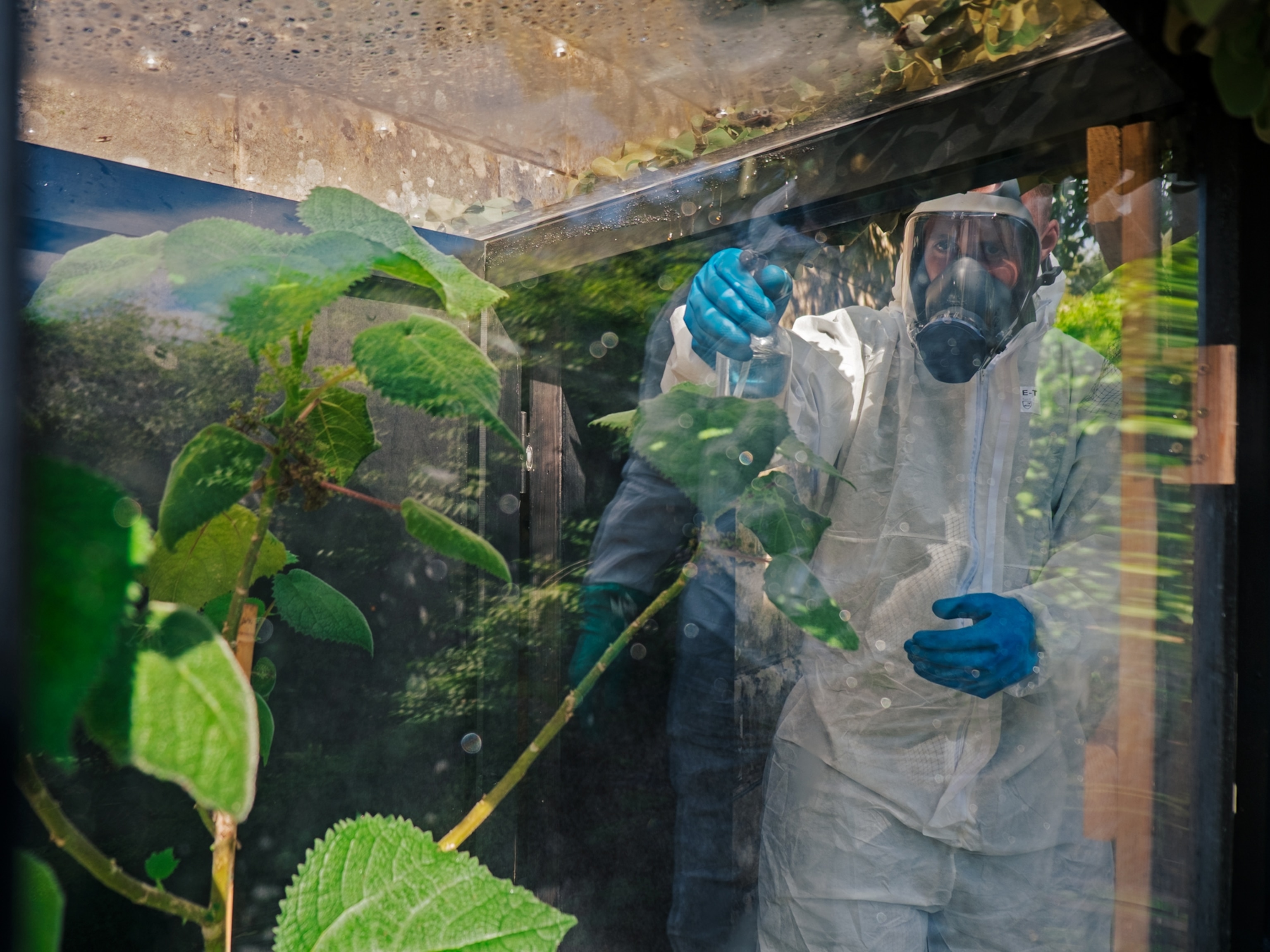Why Insects Are Drawn to Corpse Flower’s Stench
A stinky corpse flower named Trudy draws thousands of visitors—and probably a few flies—to the University of California Botanical Garden.
People had been waiting for days with bated breath—and pinched noses—for Trudy the corpse flower to bloom at the University of California Botanical Gardens in Berkeley. The plant finally obliged on Saturday night, opening up for the first time in six years and releasing “infrequent blasts” of the odor that gives the flower its name: that of rotting flesh.
Trudy has already begun to wilt and shed pollen, but not before attracting some 2,250 visitors to its 56-inch phallic bloom. Many are chronicling their encounters with the fetid flower on social media, where Trudy is trending.
The corpse flower is one of the world's biggest, stinkiest plants, says Bill McLaughlin, curator of plants at the U.S. Botanic Garden. And while the odor is revolting to humans, to dung beetles and flies it smells like opportunity.
"It makes them think there's rotten meat somewhere to lay their eggs, and then that helps the corpse flower to get pollinated," Mo Fayyaz, the greenhouse and garden director at the University of Wisconsin's department of botany, told National Geographic in 2013, when another group of crowds were lining up to smell the U.S. Botanic Garden’s putrescent bloom. "It smells bad to us, but it smells great to flies."
Why So Smelly?
Native to Indonesia, the corpse flower favors high heat and humidity and ample space—which is probably not a problem, given how smelly it is. Calling it a flower is actually a misnomer: it is made up of several flowers that cluster around the base of the stalk (the spadix), hidden by the plant’s maroon skirt (the spathe). It owes its popular name to its disgusting (or delicious, depending on your species) odor. And, looking at its giant stalk, one can imagine the inspiration for its Latin name, Amorphophallus titanum. (David Attenborough coined the name titan arum as a more PG alternative).
When flies and beetles come across it, they make their way into the plant's cup-like bloom searching for the source of the scent.
"What the flowers are doing is putting out these sulfur-ridden odors, and this is the magic button for these flies," Rob Raguso, a chemical ecologist and associate professor at Cornell University, told National Geographic. It’s also heating up—the bloom actually reaches human body temperature, making it all the more convincing to flesh-loving insects. "The flies fly in from a distance, land, and then look for dark places within the flower to lay their eggs."
According to McLaughlin, the pollinators wedge themselves into the corpse flower's tight spaces, attracted by the overwhelming smell of carrion. In the process, they become covered in pollen. With any luck, they will pollinate the next stinky flower in their path.
But why do people line up to visit it?
"There's something unique about it. It makes people excited," says Fayyaz. "Every flower that you encounter, it's a smell that humans like. But this is different."
Rachel Becker, Lara Sorokanich, and Melody Kramer all contributed reporting and writing to this piece.
Follow Rachel Becker on Twitter.





